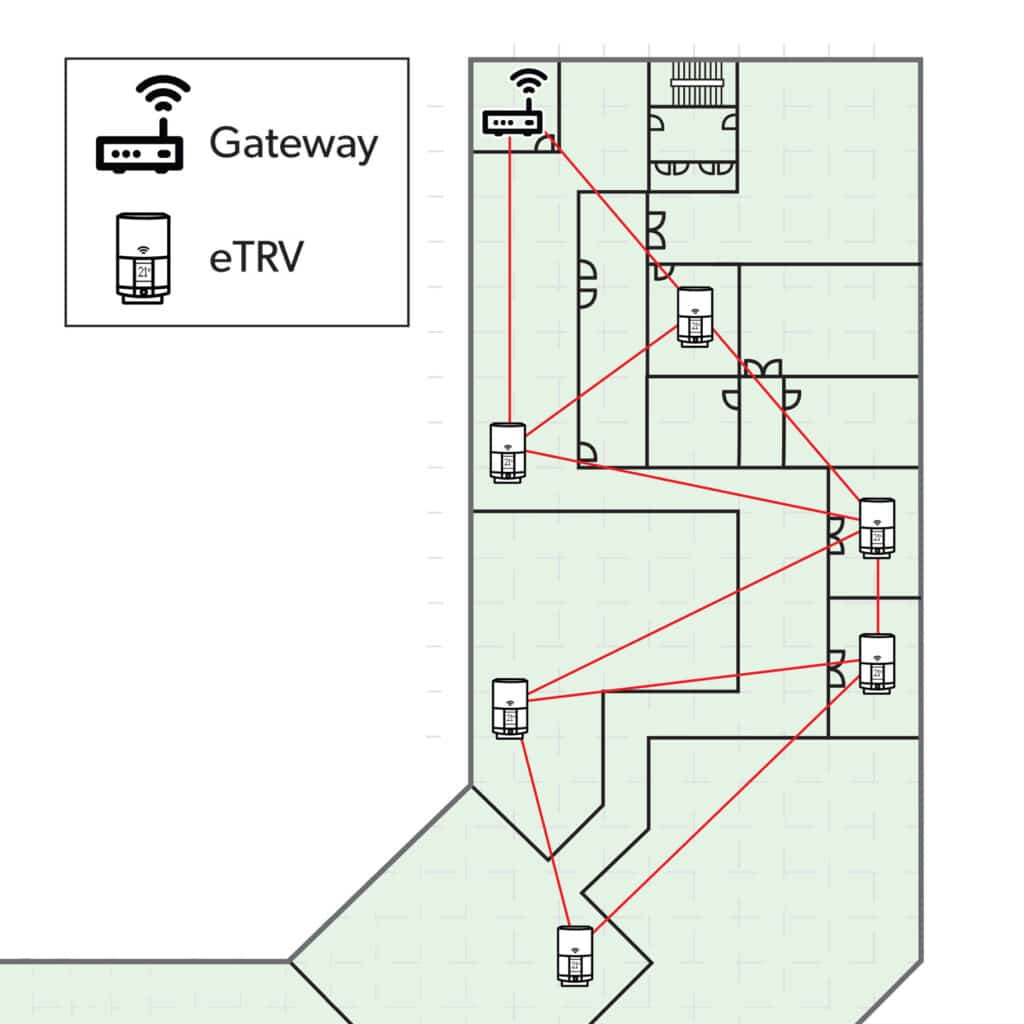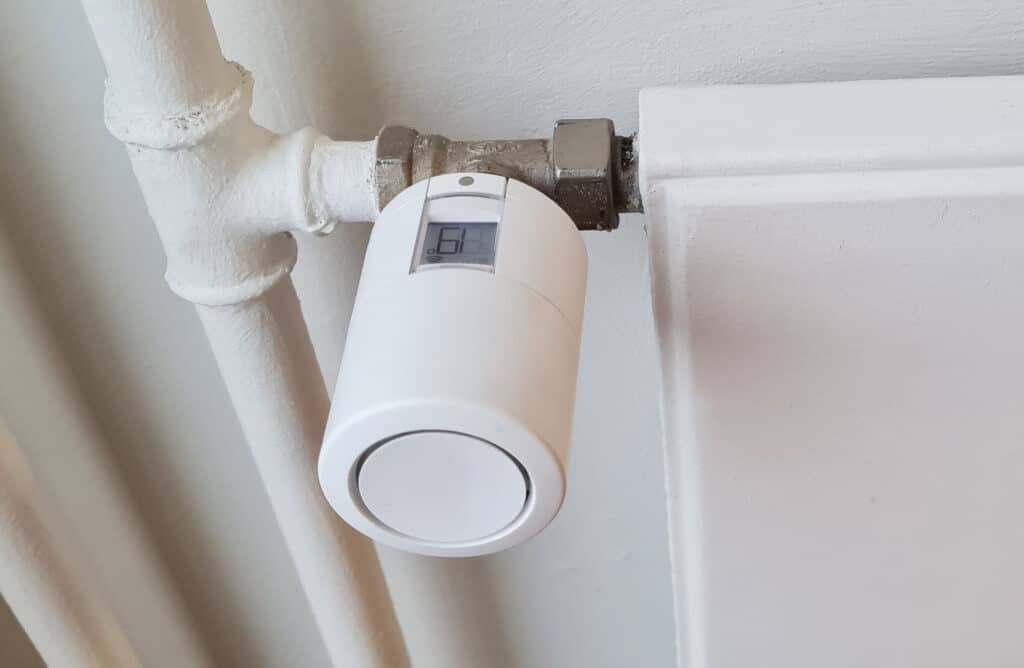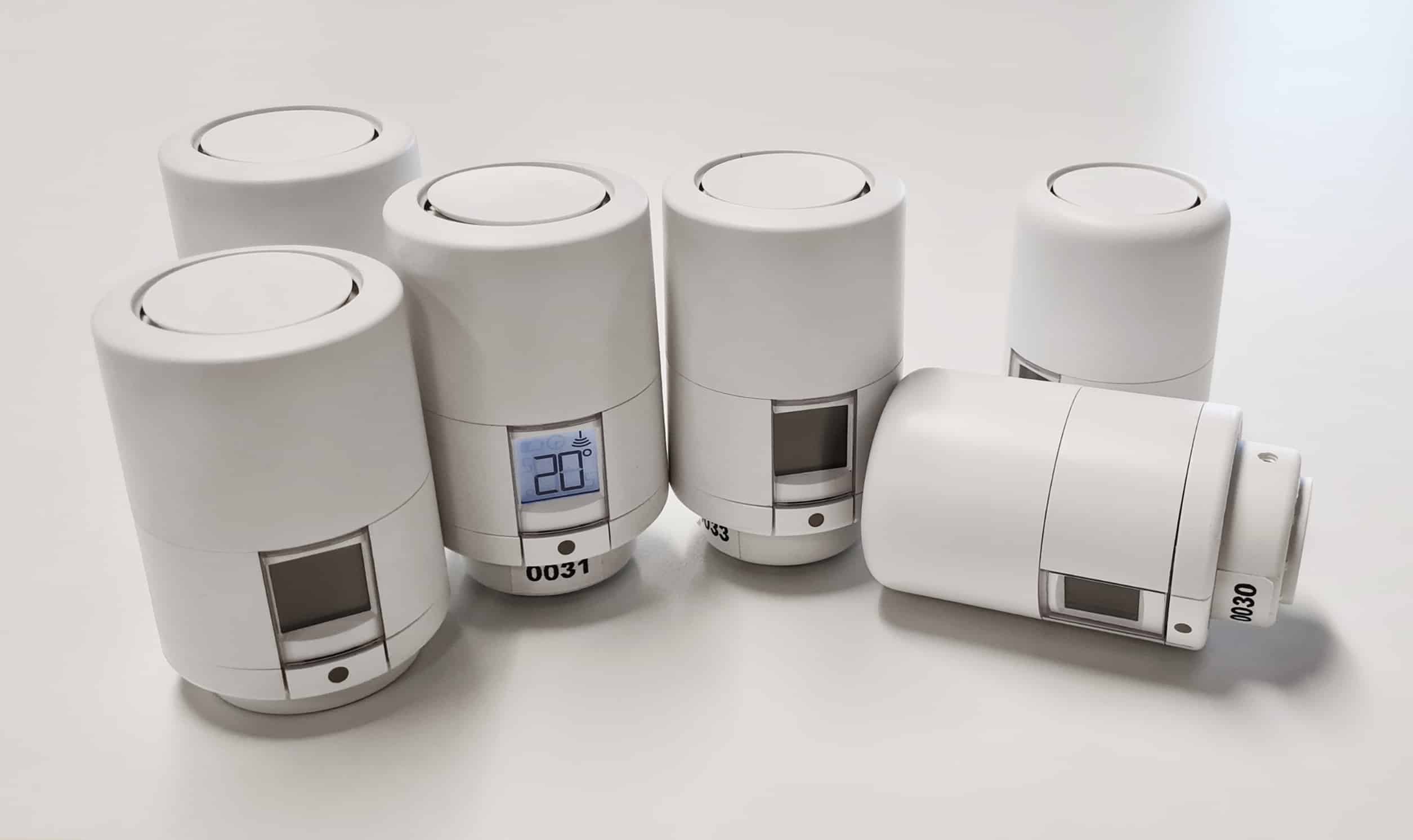
Cases
NeoCortec
Danfoss radiator valve modification project demonstrates effectiveness of NeoMesh wireless mesh networking technology in smart buildings
By Cato Fagermo, NeoCortec
Smart Thermostatic radiator valves (eTRV) present an excellent opportunity to implement smart buildings. By including a sensor and wireless network link within the eTRV, the temperature of a room can be monitored and controlled automatically from a central location. This makes it possible to reduce the temperature in the rooms without occupancy, e.g. during night, vacations or weekends. According to Danfoss, a market leader in automatic heating control technology, energy savings will typically be up to 23% by introducing smart heating, whereas the Danish Energy Agency says that energy savings will be more than 5% if the temperature is lowered by 1°C. The Ally product range from Danfoss is one example of a smart home eTRV that is addressing this challenge. It is marketed for its simplicity, being controlled through a smartphone App.
Currently, Danfoss bases the networking capability of its Ally range on Zigbee technology. However, a major limitation with Zigbee in this application is that the maximum number of eTRVs in the network is 32. So, while a Zigbee network might be fine for a small home installation, for a multi-family building or office, commercial or other workspace, Zigbee is not a practical solution as more eTRVs are needed. Zigbee also has another issue: in common with many other networking technologies, Zigbee needs mains power for routing.
There are many networking technologies that on face value seem to offer similar benefits. But careful consideration of the application will often highlight shortcomings which may not be immediately obvious. Zigbee is not a good fit for smart & large building applications because it does not scale in number of devices, although for single-family home use, it may be a valid choice. LoRaWAN promises a long range between gateway and eTRV, but it too has limitations. LoRaWAN is a star-based configuration, so each node connects directly to the main gateway. Devices with poor connection will experience a significant increase in power consumption as their Spreading Factor increases. (The Spreading Factor controls the chirp rate, and therefore the speed of data transmission.) This can reduce battery lifetime to as low as one year. Furthermore, LoRaWAN can be somewhat difficult to install and operate, adding cost and complexity to this networking technology.
NeoMesh – massively scalable; low power
Another technology which overcomes many of these issues is NeoMesh. In a NeoMesh network, all nodes – such as an eTRV in a network – act as a router, and data packets are automatically routed around the network from one node or device (in this example, an eTRV) to another rather than via a centralized gateway. This configuration has several benefits.
Firstly, it is almost infinitely scalable, and range is increased simply by positioning more devices (or nodes) as a data packet will be routed from device to device until it reaches the destination. With NeoMesh, there is no upper limit on how many ‘hops’ the data packet can make; consequently, there is no practical limit on the number of hops a device can be from the gateway. Therefore, networks are massively scalable and large buildings can be covered.
Secondly, all devices are ultra-low power, enabling them all to be battery-powered.
Bi-directional data propagation is supported so any device can both send and receive packets, both between devices as well as to/from the gateway. A NeoMesh system is self-healing: if one device fails, the system will re-route around the problem.
Crucially, the chances of losing data packets are minimized. NeoMesh uses frequency hopping. Every time a device transmits, it does so on one of 15 channels, reducing the likelihood of collisions and lost data transmissions.

Danfoss eTRV modification
In order to equip large buildings, such as commercial or industrial buildings or multi-family apartment buildings, with smart eTRVs, the wireless communication protocol employed must be able to support several hundreds of devices in the same network. Packet loss must be low or almost absent, and all eTRVs must be able to communicate bidirectionally with a gateway. Further, the eTRVs must be able to operate on batteries for years, and installation must be fast and simple without risk of having poorly connected eTRVs. Finally, the network must be resilient to changes in the building, such as new or moved walls, increased furniture and interference from other wireless systems.

In order to demonstrate the suitability of NeoMesh in the Danfoss radiator valve, NeoCortec – the inventors and suppliers of NeoMesh – took the unusual step of modifying store-bought Ally eTRVs to produce proof-of-concept (POC) devices. The Ally consists of two microcontrollers (MCU), one transceiver for communicating over Zigbee and another to host the application which controls how the eTRVs regulates the temperature. Communication between the MCUs is facilitated over the UART. The NeoCortec team stripped the existing Zigbee stack from the Silicon Labs EFR32MG13 (2.4 GHz) transceiver and replaced it with the NeoMesh stack. Only the Zigbee code was changed and a software interface to the other MCU which controls the servomotor was rewritten; all the hardware was retained.
NeoCortec also produced a small gateway using the same Silabs MCU and connected it to a PC. A PC application was written to interface with the gateway and the network of eTRVs. This enables users to monitor the wirelessly connected valves and set the target temperature.
Result
In the trial, six eTRVs were modified and positioned such that some of the eTRVs were out of range of the gateway. From the NeoMesh PC application, the network of eTRVs could be monitored, and using the network visualisation tool it was possible to see that some eTRVs were connected through the mesh and not directly with the gateway. When an eTRV was switched on, it automatically found its place in the mesh network by establishing connections to other eTRVs. As devices were moved around, some devices would come into range of the gateway and others would fall out of range, but the NeoMesh network would re-organize dynamically to reflect the new topology.
NeoCortec established sufficient access to the application layer of the eTRV which controls the servo and the display of the eTRV, to enable the team to push temperature settings to the eTRVs. This can be done individually to a specific eTRV, or collectively to all. Confirmation of received setting is confirmed on the eTRV display and a sound as the servo motor activated.
Communication from the eTRVs to gateway was confirmed by changing the set temperature on the eTRVs. This was performed by rotating the outer housing of the Ally, similar to operation using Zigbee. The new temperature was displayed in the eTRV display, and a few seconds later a packet would arrive at the gateway with the new set temperature.
The tests confirmed that the modified eTRVs were working as expected in a NeoMesh network, and that if the team had access to hundreds of similarly modified Ally eTRVs then all of these would also function properly in one NeoMesh network.
Conclusion
Danfoss Ally thermostats can be modified with the NeoMesh wireless communication protocol, making it possible to have hundreds or even thousands of Ally eTRVs in the same network. These can be installed in large buildings without need for mains-powered routers. Battery lifetime will be many years using two AA batteries.
Apart from almost infinite scalability, ultra-low power consumption, two-way communication and significantly reduced incidents of lost data packets, NeoMesh offers other benefits. If the NeoMesh technology is used within eTRVs, then only the eTRVs are needed – no routers. In fact, as more eTRVs are added increasing the density of the network, the network will become stronger with fewer poorly connected eTRVs. In a typical use case such as multi-family building, office or commercial building, usually the number of radiators is enough to provide sufficient density of eTRVs to support a functioning NeoMesh network. Technicians do not have to troubleshoot installations which suffer from poorly connected eTRVs, or – worse – suffer from intermittent data loss.
Also, because each NeoMesh device is a routing device, no special mains power router device are required.
This makes the technology simple to install and very reliable. No mains power outlets need to be established, nor is there any need to be concerned about routers becoming unplugged from power. Finally, maintenance, including battery replacement, will be infrequent and predictable.
Outlook
The NeoCortec team is confident that eTRVs from other manufacturers could also, in most cases, be modified along similar lines to the Ally demo, replacing the pre-existing Bluetooth, Zigbee, Zwave or Thread/Matter protocols with NeoMesh, and gaining the benefits delivered by this technology. Moreover, by selecting a different radio frequency of, say, 868 or 915 MHz the maximum range between any two eTRVs can be even further increased. Since radiators will be installed in every room throughout a building, other forms of monitoring, for example CO2levels, temperature, humidity, occupancy or fire detection could also be similarly automatically controlled remotely. This makes NeoMesh an ideal network protocol for applications such as improvement of indoor air quality (IAQ) and fire detection.

Quote
In order to equip large buildings, such as commercial or industrial buildings or multi-family apartment buildings, with smart eTRVs, the wireless communication protocol employed must be able to support several hundreds of devices in the same network.

cases
